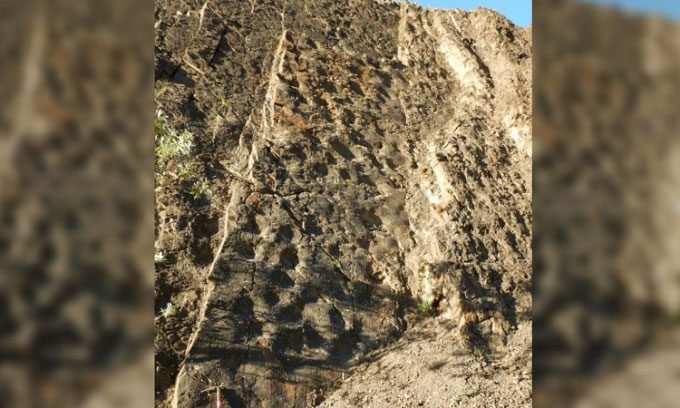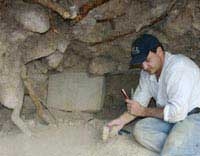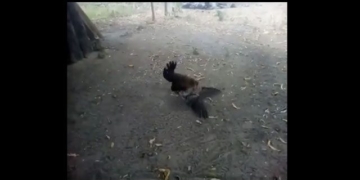A 66-meter-high cliff in Alaska is covered with countless footprints of Cretaceous dinosaurs, including the Tyrannosaurus rex.
Researchers have discovered the surface of a 20-story cliff that is blanketed with fossilized footprints from dozens of dinosaurs, as if these ancient creatures defied gravity to traverse the rocky expanse. However, the real cause is geological processes, Live Science reported on August 17.

The dinosaur footprint-covered surface of the cliff in Denali. (Photo: Patrick Druckenmiller)
The cliff is located in Denali National Park and Preserve, currently standing at 66 meters high. However, around 70 million years ago, at the end of the Cretaceous period, this cliff was a sedimentary mudflat likely surrounding a waterhole amidst a vast floodplain. This explains the diverse range of dinosaur footprints found on the cliff face, including both juvenile and adult specimens of various horned and duck-billed herbivores, carnivorous dinosaurs like raptors, flying reptiles, and at least one Tyrannosaurus rex.
Long after the dinosaurs left their footprints in the area, the trail was uplifted and tilted to one side as the ground shifted forward during a tectonic collision, similar to how a car hood bends under impact. This tectonic activity is part of the geological upheaval that formed the 966-kilometer-long Alaska Range near Denali National Park, according to the National Park Service.
The research team named the area “The Coliseum” due to the variety of dinosaurs at the water’s edge. They published their analysis of the cliff in the journal Historical Biology. The cliff is part of a larger rock formation located a seven-hour hike away from the nearest road. Previously, other researchers had discovered a series of footprints at the base of the cliff but overlooked the complex assemblage above, mainly because the majority of the fossils were covered by sediment. When sunlight shines through at the right angle, the footprints become much clearer, according to lead researcher Dustin Stewart, a paleontologist at Paleo Solutions.
Upon closer examination, the research team found the footprints to be remarkably detailed and beautiful, with clear shapes of toes and skin textures visible. Additionally, the cliff also contains plant material, pollen, shelled animals, and wading bird footprints. The researchers hope that this discovery will help them outline a detailed picture of the ecosystem 70 million years ago.





















































